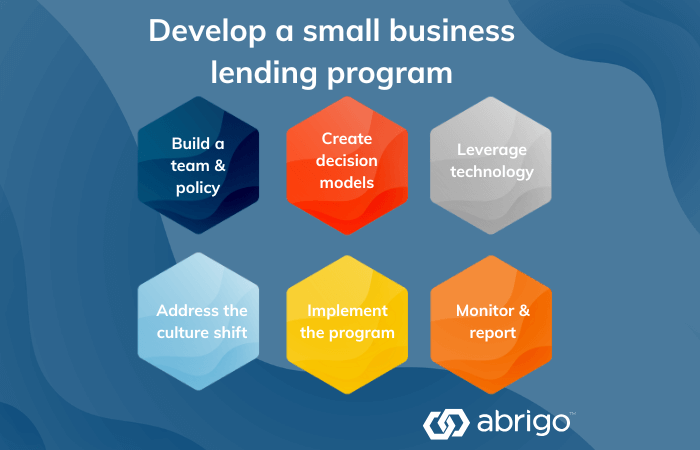6 Steps for creating a small business lending program
1. Build a team and policy
This is not a Nike moment where an institution can just do it. Small business lending needs to be a focus—a program. An institution must be able to say, “We are small business lenders,” not just “We do small business lending.”
The first priority is clearly defining the “who” and the “how.” Will there be dedicated production staff or underwriters? Will loan officers manage both commercial and small business portfolios? Define roles and responsibilities and identify a team to own the process from start to finish.
Next, create a small business lending policy supported by the institution’s risk appetite. This policy should live within the core credit policy and include:
- How an SBL loan is defined (vs. a commercial loan)
- Allowable and excluded products or industries (e.g., cannabis-related businesses)
- Dollar thresholds (minimums, maximums, or total exposure limits)
- Target markets
- Acceptable collateral (e.g., no CRE loans)
- Required documents
- Credit risk attributes for decision models
- Staff responsibilities
Keep it simple. Focus on reducing the burden for borrowers and staff while getting the information needed to make sound credit decisions.
2. Create decision models
Decision models allow lenders to move quickly and consistently. The goal is to eliminate unnecessary complexity so small businesses can access capital faster.
Scorecards that combine quantitative factors like debt service coverage ratios and credit scores with qualitative inputs such as management experience or industry concentration help standardize decisions across the institution. That consistency mitigates variation across lenders and underwriters, promotes compliance, and makes exceptions easier to audit and track.
Attributes can be weighted, and outcomes assigned, such as “auto-approve,” “recommend for review,” or “decline.” It’s the art and science of lending, combined.








